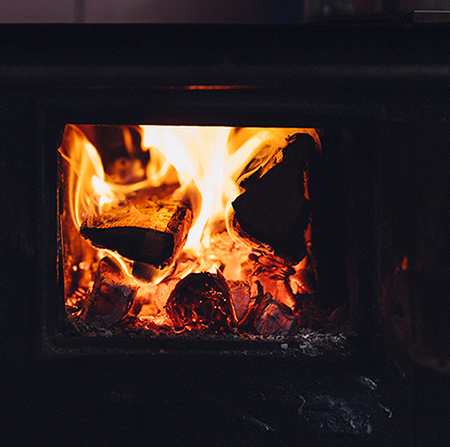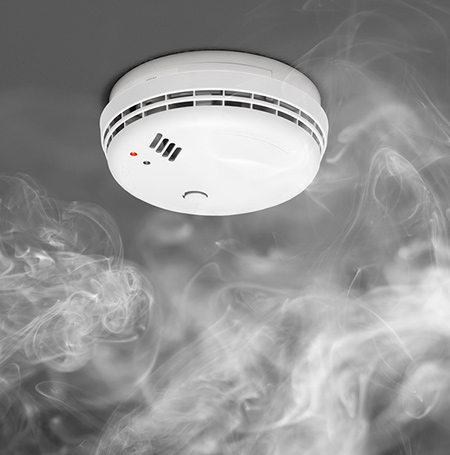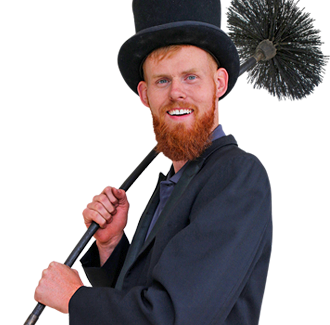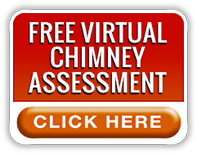Three Hidden Fireplace-Related Dangers
 The popular saying “knowledge is power” is especially true about fireplace safety. Learning about the hidden dangerous a fireplace poses is the best way to protect yourself and your property. Unintentional carelessness is the leading cause of deaths from residential fires in the U.S. according to our nation’s Fire Administration’s (USFA’s) National Fire Incident Reporting System (NFIRS).
The popular saying “knowledge is power” is especially true about fireplace safety. Learning about the hidden dangerous a fireplace poses is the best way to protect yourself and your property. Unintentional carelessness is the leading cause of deaths from residential fires in the U.S. according to our nation’s Fire Administration’s (USFA’s) National Fire Incident Reporting System (NFIRS).
When you use a fireplace, live flames aren’t the only safety risk. Ashes, a cracked flue and carbon monoxide are three hidden fireplace dangers that pose an equal risk.
• Ashes
A retired major league baseball star, Chipper Jones, learned about the dangers of ashes the hard way when he accidentally started a fire in the woods behind his house with ashes from his fireplace that he threw outside.
Fresh ashes can be extremely hot and combustible. Even days later, live embers and coals in the ashes can reignite. If you do not dispose of them properly, you could be responsible for starting a fire just like Chipper Jones.
The safest way to dispose of ashes is to deposit them in an air tight metal, or non-flammable, container that can withstand high temperatures. You should keep this container outside, away from your house, on a non-flammable surface like concrete or brick. Ashes should be stored in the container for at least 4 days before tossing them in your yard or in a trash bin.
• Cracked Flue Line
A cracked flue liner creates multiple safety risks. The flue liner is the interior lining of your fireplace that allows all of the combustion byproducts, which includes corrosive chemicals, carbon monoxide and the highly combustible compound creosote, to vent outside. Along with creating a smooth passage way for these byproducts to travel up on their way out of your house, the flue liner also protects your home from them.
If the flue liner is cracker or broken, creosote can build up in these cracks and gets into the surrounding material (such as structural beams, insulation and drywall). A stray spark or high heat could ignite the creosote and cause a deadly and destructive housefire. Carbon monoxide could also seep through the cracks into your home putting you and your family at risk of carbon monoxide poisoning.
The only way to prevent these risks is to have your chimney regularly inspected by a chimney expert. A certified chimney sweep will give you a report after his inspection and let you know if there are any cracks that need to be filled in or if there is significant damage that needs to be repaired.
• Carbon Monoxide Poisoning
Carbon monoxide is known as the silent killer because it is a toxic gas that is colorless, tasteless, and odorless. Knowledge about carbon monoxide poisoning and widespread use of carbon monoxide detectors has played an importantly role in decrease the number of fatalities each year from this toxic gas. It is still the second leading cause of deaths by poison in the U.S. Approximately 15,000 a year are hospitalized because of carbon monoxide exposure and approximately 500 of those cases are fatal according to the Center for Disease Control (CDC).
A cracked flue isn’t the only way that carbon monoxide can seep into your home from your chimney. Reversed airflow or a damaged or closed flue can also cause carbon monoxide to build up in your home instead of venting outside.
 The only way to detect carbon monoxide is with a functional carbon monoxide detector. If you have a fireplace, you should have carbon monoxide detectors in your home. Just like your fire alarm, you should change the batteries approximately every six months. If your carbon monoxide detector goes off, you should immediately open all windows to get ventilation. The next step is to turn off your fireplace or put out the fire. After letting your home ventilate, you should reset the alarm. If it goes off again, you should reach out to a certified technician to inspect your home and resolve the problem. If you notice any signs of carbon monoxide poisoning (headache, nausea, confusion, dizziness, or vomiting), you should call 911.
The only way to detect carbon monoxide is with a functional carbon monoxide detector. If you have a fireplace, you should have carbon monoxide detectors in your home. Just like your fire alarm, you should change the batteries approximately every six months. If your carbon monoxide detector goes off, you should immediately open all windows to get ventilation. The next step is to turn off your fireplace or put out the fire. After letting your home ventilate, you should reset the alarm. If it goes off again, you should reach out to a certified technician to inspect your home and resolve the problem. If you notice any signs of carbon monoxide poisoning (headache, nausea, confusion, dizziness, or vomiting), you should call 911.
If you are concerned about the safety of your fireplace system and want to set up an inspection, give us a call at (845) 471-1071! Our CSIA-certified chimney sweeps at Hudson Valley Chimney Service are depended on by homeowners throughout Upstate New York. You can count on us to protect your home from the risks of a cracked flue or carbon monoxide.








